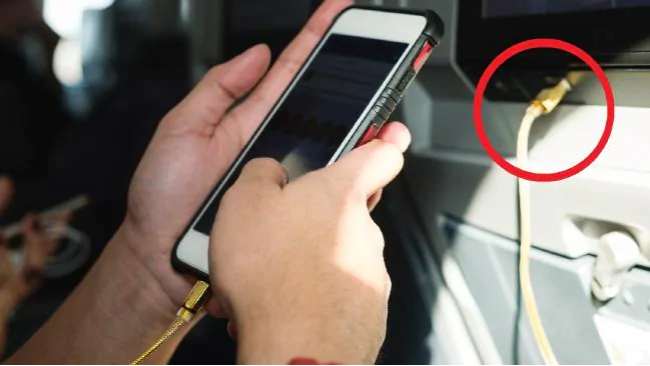
This article is more than
6 year oldWhy you should avoid using charging stations at an airport

You’re waiting at the airport, your phone vibrates in your hand — but it’s not a text.
“Low Battery — 20% of battery remaining” pops up on your screen.
Your charger is wrapped up in your check-in luggage, and the last thing you want to do is fork out airport prices for a new adaptor.
So, you track down the nearest free charging station and refuel your dwindling device.
But, it turns out that decision might cost you more than a few extra minutes on social media before you board.

An expert in the US says plugging into USB power charging stations in the airport may come with a cost you can’t see.
Caleb Barlow, vice-president of X-Force Threat Intelligence at IBM Security, says these stations can be modified by cybercriminals to install malware on your phone or download information without your knowledge.
Speaking to Forbes, Mr Barlow said these ports could act like a passageway from your device to the charging station.
“Plugging into a public USB port is kind of like finding a toothbrush on the side of the road and deciding to stick it in your mouth,” he said. “You have no idea where that thing has been.”

According to new research from the IBN X-FORCE survey, the transportation industry has became the second-most attacked sector in 2018 — moving up the ranks from 10th in 2017.
According to the report, which looks at how cyberattackers are altering their techniques to hack devices, the biggest movement has been who they now target.
“The financial services industry remained the most attacked sector of 2018, accounting for 19 per cent of all attacks observed,” according to the report.
“However, the transportation industry — which did not even make the top five list last year — moved to the second most attacked sector in 2018, with attempted attacks increasing threefold since the year prior.”

Mr Barlow said it was much safer for passengers heading to the airport to bring a regular charger along and plug it into a wall outlet or, alternatively, bring a portable power bank to recharge your phone when you’re low on bars.
“Let’s say I’m a bad guy … I go into an airport … I’m not going to easily take apart the charging station, but it’s easy just to leave my cord behind,” he explained.
“Now, if you see an Apple charging cord, you’re likely to grab it or just plug into it. But inside this cord is an extra chip that deploys the malware, so it charges your phone, but now I own your computer.”




